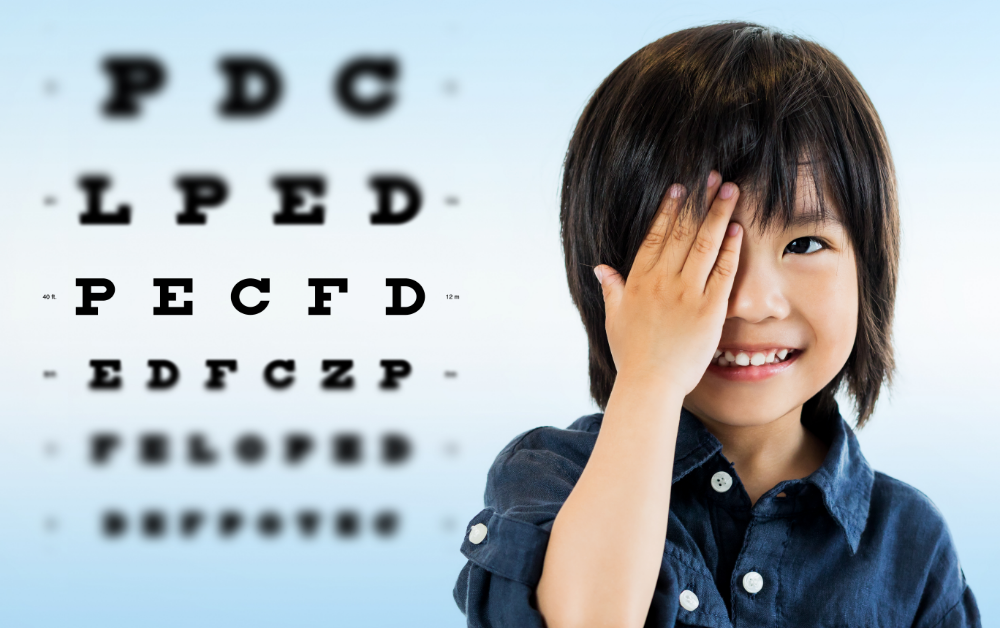Can these innovative and emerging interventions for managing myopia guarantee long-term safety and effectiveness?
A global concern with the potential to affect billions by 2050, myopia poses risks of severe eye conditions and blindness. Thankfully, innovative interventions show promise in managing myopia. While these interventions offer hope, some still need FDA approval, and others require further research to fully understand their long-term safety and effectiveness in combating myopia.
Myopia is increasingly becoming one of the worst epidemics the world has ever seen, impacting millions of children and adults worldwide. This trend is unsurprising, considering the widespread and prolonged use of digital devices in today’s fast-paced digital world, which has often been linked to myopia progression.
An escalating concern
Prolonged near-vision tasks such as reading and writing, and computer and smartphone use are also possible causes of myopia progression.
Many myopia cases involve progressive high myopia, which may not be effectively managed by standard optical corrections like glasses, orthokeratology, LASIK, intraocular lenses, and corneal refractive surgery.
Progressive high myopia often deteriorates further even with such interventions, raising the risk of developing serious eye conditions, such as retinal detachment, cataracts, or glaucoma—significantly increasing the risk of blindness.
While all this sounds downright depressing, the good news is that researchers are constantly looking for ways to manage myopia more effectively.
Here are three promising interventions for myopia management that have recently emerged.
1. Repeated low-level red-light therapy
A revolutionary new therapy called repeated low-level red-light (RLRL) therapy is currently being widely used in China as an effective treatment for amblyopia. The rationale behind the technology is that it mimics or replaces exposure to natural light for children who spend time indoors.
While spending time outdoors is often recommended to prevent or slow the onset of myopia, Dr. Ashley Wallace Tucker, a partner at Bellaire Family Eye Care and The Contact Lens Institute of Houston in Texas, USA, said RLRL is a sensible alternative.
She noted that the current recommendation for outdoor time is at least two hours per day, though more is recommended. “Children who spend less than 13 hours a week outdoors are at significantly higher risk of developing myopia. For many families, spending that much time outdoors is difficult due to a variety of factors: Time constraints, weather, or lack of parental supervision,” shared Dr. Tucker. “RLRL therapy could provide the same benefits of outdoor time in a fraction of the time.”
Potentially, RLRL could serve as an additional method for controlling myopia. “Children with high myopia are particularly concerning due to the continued risk for unpredictable progression. I doubt this will be used as monotherapy for these patients, but rather in conjunction with other modalities such as spectacles, contact lenses, and atropine.”
At least two randomized controlled trials in myopes and one randomized clinical trial in pre-myopes have already been carried out in China using the device and have indicated high efficacy with RLRL.1,2
The studies show substantial reductions in the risk of myopia onset and rate of myopia progression in children aged from 6 to 15 years.
In the first published, multicenter randomized control trial, Chinese children aged 8 to 13 years with myopia of -1.00 to -5.00 D, astigmatism up to 2.50 D, anisometropia up to 1.50 D and best-corrected visual acuity of 20/20 equivalent were enrolled.
According to Yu Jiang, et. al., in their paper titled Effect of Repeated LowLevel Red-Light Therapy for Myopia Control in Children: A Multicenter Randomized Controlled Trial, the RLRL treatment was provided by a desktop light therapy device that emits red light of 650-nm wavelength and was administered at home under parental supervision for 3 minutes per session, twice daily with a minimum interval of 4 hours, 5 days per week.1
One-year data involving 264 children found differences in axial elongation and SER progression of 0.26 mm and -0.59 D between the RLRL and the control group.
No severe adverse effects or structural damage seen on OCT scans were observed.
In the second randomized controlled trial in China, 112 Chinese children aged 7 to 12 years with myopia of at least -0.50 D, astigmatism up to 1.50 D and anisometropia up to 1.5 D, were recruited.
In the study by Jing Dong, et. al., on Myopia Control Effect of Repeated Low-Level Red-Light Therapy in Chinese Children: A Randomized, Double-Blind, Controlled Clinical Trial, the control group underwent a sham treatment using a device with 10% of the original device’s power.2
The same protocol of 3 minutes per session, twice daily, with an interval between sessions of at least 4 hours, was used.
After six months, the mean SER change was 0.06 +- 0.30 D in the RLRL group while the control group progressed -0.11 D +- 0.33 D. No adverse events were reported.
In a 12-month school-based randomized clinical trial in 10 primary schools in Shanghai, China, a total of 278 children with pre-myopia were enrolled. Children in the intervention group received RLRL therapy twice a day, 5 days a week with each session lasting 3 minutes, at school during semesters and at home during vacations. Children in the control group continued usual activities.3
According to authors Xiangui He, et. al., the 12-month incidence of myopia was 40.8% in the intervention group and 61.3% in the control group. The study showed that RLRL therapy was an effective intervention for myopia prevention, with up to 54.1% reduction in myopia among children with pre-myopia.3
However, Dr. Tucker cautioned that RLRL therapy is not yet FDAapproved in the US, and there have been limited studies on its safety and efficacy.
Currently, several more studies are reportedly underway in Australia, Japan, the USA, the UK and Singapore.
2. Peripheral defocus lenses
Peripheral defocus lenses are specialized contact lenses or glasses specifically designed for myopia control. This innovative technology has garnered a great deal of excitement, thanks to its potential to slow down the progression of myopia in young patients.
The lenses are made to intentionally induce controlled defocus in the peripheral visual field while maintaining clear central vision. This causes a delayed response in eye elongation, helping to reduce myopia progression.
The Hoya MiYOSMART was the first of the new generation of myopia control spectacle lenses. Data from a two-year randomized controlled clinical trial for Hoya MiYOSMART revealed an average 59% myopia control effect in cycloplegic spherical equivalent refraction and 60% in axial length.
“Since the launch of Hoya’s peripheral defocus lenses, boasting a 59% success rate, we’ve seen other manufacturers follow suit with their own versions of peripheral defocus lenses,” remarked Ms. Christina Tan, an optometrist with Vantage Vision Care PLT in Malaysia.
One such example is Stellest (Essilor; Charenton-le-Pont, France), launched in 2023, which uses Highly Aspherical Lenslet Target (HALT) technology and reports an average success rate of 67%. Both one-year and two-year randomized control trial data have been published.
In a paper by Jinhua Bao, et. al. titled, Spectacle Lenses with Aspherical Lenslets for Myopia Control vs Single-Vision Spectacle Lenses: A Randomized Clinical Trial, children who wear Stellest lenses for at least 12 hours per day, 7 days a week, recorded a final axial length and myopia of respectively 0.41 mm and 0.99 D less than children who wore single vision spectacles.4
However, Ms. Tan cautioned that a limitation of the lens is that it only comes in one type of index.
“This lens technology is manufactured exclusively in 1.59 index, offering safety features but with restrictions. It’s suitable for refractive errors below -10.00 and astigmatism below -4.00. However, patients with high myopia may not be able to use these lenses,” she added.
Ms. Tan noted that she has been 2 COOKIE MAGAZINE | April 2024 7 prescribing Hoya’s (Tokyo, Japan) MiYOSMART lenses since their introduction and diligently monitors the axial lengths of her young patients.
“I see that it works. In the majority of children, it effectively slows down myopia progression, and in some cases, there’s been no progress in their myopia for the past two to three years,” she shared.
3. Wireless, battery-free eye modulation patch for high myopia
In a study conducted by Zhong, et. al., researchers investigated the potential of a wireless, battery-free eye modulation patch as a promising clinical treatment for high myopia.5
According to the study, “Wireless ultrasound control of the eye modulation patch, compared to traditional ophthalmic surgery, offers several benefits, including less invasive extracorporeal manipulation therapy.” This approach reduces the need for intraoperative exposure, cuts surgery time, and simplifies the overall treatment.
The technique allows for precise axial length regulation and standard corneal cross-linking performance via ultrasound, boosting treatment accuracy and reducing the need for repeat surgeries.
The study achieved an average axial length adjustment of approximately 1.217 mm in rabbit eyes, potentially translating to a significant myopia correction in humans (~2.5 diopters).
Despite correcting refractive errors, myopia can recur due to scleral thinning and extension. “Our innovative approach combines riboflavin microneedles/blue μ-LED treatment for scleral cross-linking, resulting in a notable increase in scleral strength by about 387%,” the study said.
The patch consists of piezoelectric transducers, an electrochemical microactuator, a drug microneedle array, μ-LEDs, a flexible circuit, and biocompatible encapsulation.
The system can be wirelessly powered and controlled using external ultrasound. The electrochemical micro-actuator plays a key role in shortening the axial length by driving the posterior sclera inward, enabling accurate scene imaging on the retina for myopia.
The drug microneedle array delivers riboflavin to the posterior sclera, and μ-LEDs’ blue light induces collagen cross-linking, reinforcing sclera strength.
In vivo experiments demonstrate that the patch successfully reduces the rabbit eye’s axial length by ~1217 μm and increases sclera strength by 387%. The system operates effectively within the body without the need for batteries.
However, due to the study’s small sample size and the relatively short 22-day post-surgery observation period, longterm outcomes and potential complications are yet to be fully understood. Therefore, further research and extended observation are necessary to better assess the treatment’s long-term safety and effectiveness.
References
- Jiang Y, Zhu Z, Tan X, et al. Effect of Repeated Low-Level Red-Light Therapy for Myopia Control in Children: A Multicenter Randomized Controlled Trial. Ophthalmology. 2022;129(5):509-519.
- Dong J, Zhu Z, Xu H, He M. Myopia Control Effect of Repeated Low-Level Red-Light Therapy in Chinese Children: A Randomized, Double-Blind, Controlled Clinical Trial. Ophthalmology. 2023;130(2):198-204.
- He X, Wang J, Zhu Z, et al. Effect of Repeated Low-level Red Light on Myopia Prevention Among Children in China With Premyopia: A Randomized Clinical Trial. JAMA Netw Open. 2023;6(4):e239612. Erratum in: JAMA Netw Open. 2023;6(9):e2337652.
- Bao J, Huang Y, Li X, et al. Spectacle Lenses With Aspherical Lenslets for Myopia Control vs Single-Vision Spectacle Lenses: A Randomized Clinical Trial. JAMA Ophthalmol. 2022;140(5):472-478.
- Zhong T, Yi H, Guo J, et al. A wireless battery-free eye modulation patch for high myopia therapy. Nat Commun. 2024;15(1):176
Editor’s Note: This article was published in COOKIE Magazine Issue 15.


